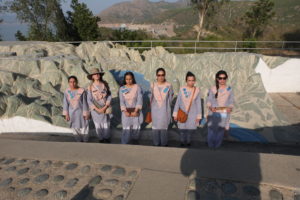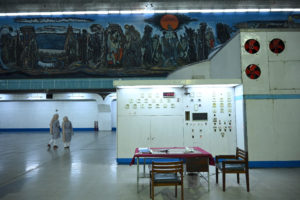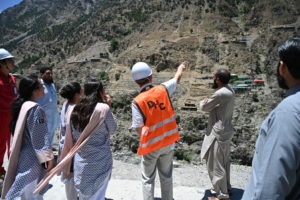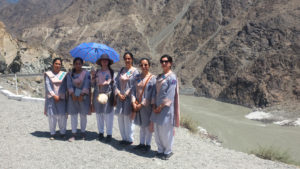Field Recordings/Photos
Installation Video
Collection of Sharjah Art Foundation
Artist Statement/Bio
A group of women artists called the ‘Pak Khawateen Painting Club’ (Pure/Pakistani Women’s Painting Club) venture to the frontier of the Indus river for ‘plein-air’ painting of nationalistic infrastructure projects: mega hydropower dams in the strategically sensitive north. Stereotyped as a benign, bourgeoisie group of patriotic conformists, these female painters don uniforms inspired by Pierre Cardin’s 60s design for Pakistan International airlines’ airhostesses. They enter sites built and imagined by powerful men to generate power and energy for the nation – only to subvert their prescribed roles. Drawing upon the epic Urdu novel, ‘River of Fire’ by Qurratalain Haider, complex, cross-temporal narratives are interwoven to depict a people united around diverse sources of life and inspiration derived from the Indus: deities, rituals, supernatural powers and folklore transcend religion and time, buttressing subaltern cultures and riverine communities. The foregrounding of these organic forces, traditions, and aesthetic forms challenges the masculine rubric of colonial modernity, the epitome of which is hydrological engineering oriented towards commercial agriculture. The latter, which has resulted in the displacement of indigenous populations, unequal division of resources and inundation of histories, finds an unexpected foe in its (not so) -‘Pak’ provocateurs: Amna Hashmi, Malika Abbas, Natasha Malik, Emaan Shaikh, Saba Khan, and Saulat Ajmal.











